Although overshadowed in the unprecedented turbulence of his final days in office, President Trump, like defeated presidents of both parties, boxed in his successor with policies that an electoral majority rejected. He and the Senate extended that behavior to the courts, with the post-November 3 confirmation and appointment of 14 judges, which Democrats protested as violating a “long and established tradition.”
This post considers whether these 14 appointments (6% of Trump’s 234 total) violated some established practice of not confirming defeated presidents’ nominees—and the appointments’ (slight) impact on the Biden administration’s already comparatively meager confirmation landscape.
Slate’s Dahlia Lithwick and Tobias Wolff argued that the 14 confirmations “took a pickax to one last norm in the judicial nominating process that has persisted for 125 years.” National Review’s Ed Whelan responded that divided government, “rather than a supposed precedent no one had ever heard of that explains the dearth of post-election confirmations in recent decades.”
Beyond dispute is that since President William McKinley’s 1897 inauguration, Senates have confirmed 15 nominees of defeated presidents and that President Trump’s account for 14 of them. But what factors are responsible for these numbers?
1933’s 20th amendment adjusted the length of the presidential transition period and the date at which a new Congress convenes. Since then, the Senate’s schedule has provided limited opportunity to consider defeated presidents’ nominees.
Incoming Senates convene in early January, a few weeks before any January 20 presidential inauguration; those Senates ignore defeated presidents’ occasional, symbolic nominations (such as the two Trump submitted on January 3).
Outgoing Senates have stayed in session after ten of the 22 post-1933 presidential elections. Five of the ten involved winning presidents, and each time the Senate confirmed one or more of those presidents’ judicial nominees, 20 confirmations in all.
The other five involved presidents who lost, or whose party lost the election. In three instances, the other party controlled the Senate, which confirmed no nominees post-election. The two instances in which the outgoing president and Senate were of the same party produced opposite results. 2020 saw, as noted, 14 post-election confirmations. But after President Carter’s November 4, 1980 loss, the Democratic Senate confirmed none of the 15 then-pending nominees. But it overwhelmingly confirmed his December court of appeals nomination of now-Justice Stephen Breyer. Carter aide Stuart Eisenstadt explained that Republicans declined to scuttle that one nominee because they appreciated Breyer’s bi-partisan service as Judiciary Committee chief counsel.
Before 1933, outgoing Senates met from early December to early March (and any March 4 presidential inauguration). From 1900 until 1932, post-election Senates confirmed nominees in each of the five instances that sitting presidents or their party’s candidate won the November election—Roosevelt and Coolidge twice, Wilson once—accounting for 52 confirmations. But post-election Senates confirmed no judicial nominees following the defeats of Taft in 1912, Wilson’s would-be Democratic successor in 1920, and Hoover in 1932. Each had pending nominees and two (Taft and Hoover) had at least slim Senate majorities. (Wilson in his final two years, 1919-21, had a Republican-majority Senate, which confirmed all of Wilson’s nominees until the November 1920 election, when confirmations stopped.)
So, do Trump’s 14 lame-duck confirmations violate a precedent against confirming a defeated president’s nominees? The Senate’s post-1933 schedule provided little opportunity to test any norm and 1980 and 2020 provide conflicting examples. The early 20th century Senates, however, pretty clearly differentiated defeated and winning presidents’ nominees. Centuries-old precedents may provide weak support for any current norm, but hoary “precedents no one had ever heard of” were persuasive to senators who reached back over 100 years (“Since the 1880s . . .”) to justify treating Justice Amy Coney Barrett’s 2020 election-eve nomination differently than Judge Merrick Garland’s in 2016 (even if their historical record was largely fabricated).
Still, the record offers less than a rock-solid norm. A news article about a failed December 1932 Hoover nominee referred only ambiguously to a “lame duck.” Outgoing Senate Majority Leader Mitch McConnell would no doubt say—as he did in justifying the Senate’s Barrett confirmation—that “elections have consequences” and the 14 confirmations were consistent with Senate rules and the Constitution. That’s true, but so formalistic a reading risks the legitimacy that the life-tenured, undemocratic judicial branch derives from being selected by presidents who were elected by rough governing majorities—compared to a president who entered office despite a massive popular vote deficit and left after an even larger loss.
Normative arguments aside, the 14 post-election Trump confirmations had only a modest impact on the vacancies President Biden inherited upon inauguration, compared to those of recent predecessors. As of Inauguration Day, vacancies as a percent of authorized judgeships were at the bottom of the scale, comparatively, but without the lame-duck confirmations, they would not be much greater (7% rather than 5%).
Inauguration Day vacancies and percent of authorized judgeships
| Court of Appeals | District Courts* | All | |
| Clinton | 17 (9%) | 92 (14%) | 109 (13%) |
| Trump | 17 (9%) | 89 (13%) | 106 (12%) |
| W. Bush | 27 (15%) | 52(8%) | 79 (9%) |
| Obama | 14 (8%) | 42 (6%) | 56 (6%) |
| Reagan | 5 (3%) | 31 (6%) | 36 (5%) |
| Biden (as of Jan.20) | 2 (1%) | 44 (6%) | 46 (5%) |
| (w/out lame duck) | 3 (2%) | 57 (8%) | 60 (7%) |
| H.W. Bush | 10 (6%) | 31 (5%) | 41 (5%) |
* includes Court of International Trade
More vacancies will appear (e.g., after Garland becomes attorney general). As to the courts of appeals, 38 Democratic and 26 Republican appointees are eligible to retire. How many will do so is a different matter, although Democratic control of not only the White House but now the Senate will have an impact.
To recap, the lame duck Senate’s aggressive post-election confirmation of Trump nominees has certainly broken a long-standing pattern. Various factors explain that pattern, including but hardly limited to an apparent pre-1933 presumption against confirming losing presidents’ nominees. In any event, the 14 recent confirmations tilted only slightly the judicial vacancy landscape available to the Biden administration.
Data come primarily from the Federal Judicial Center Biographical Data Base (fjc.gov), the vacancy page at uscourts.gov, and from my own data sets, as well as sources referenced in the text.
The Brookings Institution is committed to quality, independence, and impact.
We are supported by a diverse array of funders. In line with our values and policies, each Brookings publication represents the sole views of its author(s).
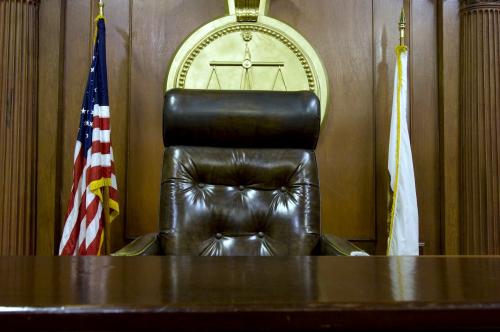
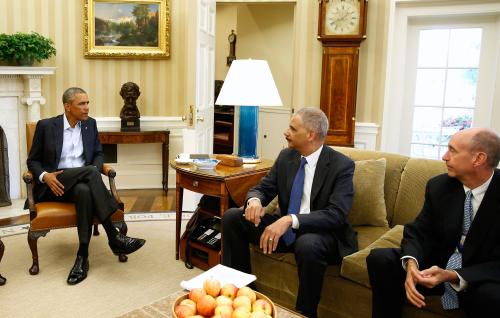
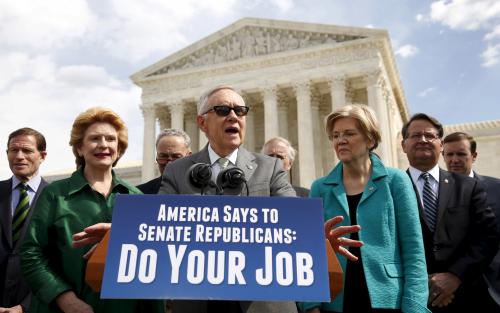


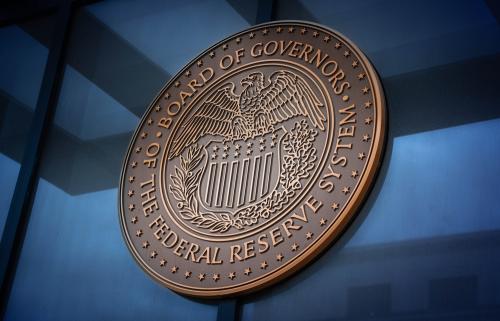
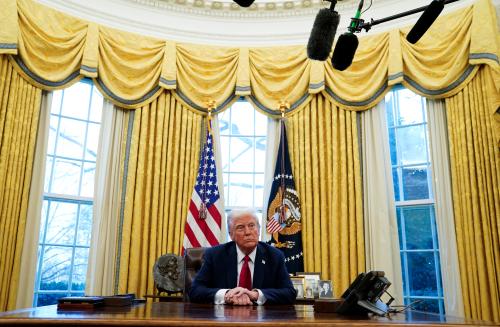
Commentary
Trump’s last-minute judicial appointments: Impact on norms and on Biden’s appointment opportunities
January 22, 2021